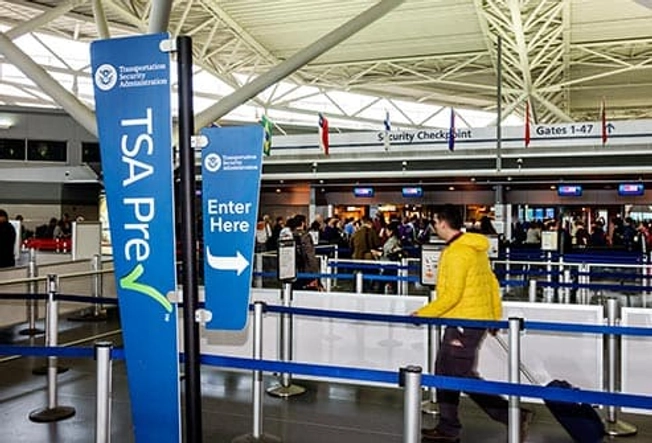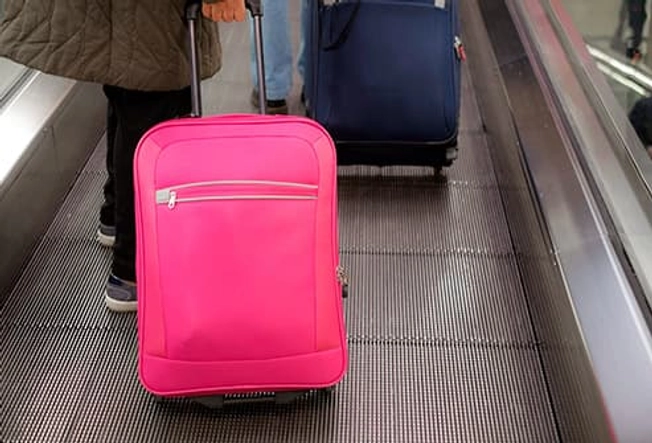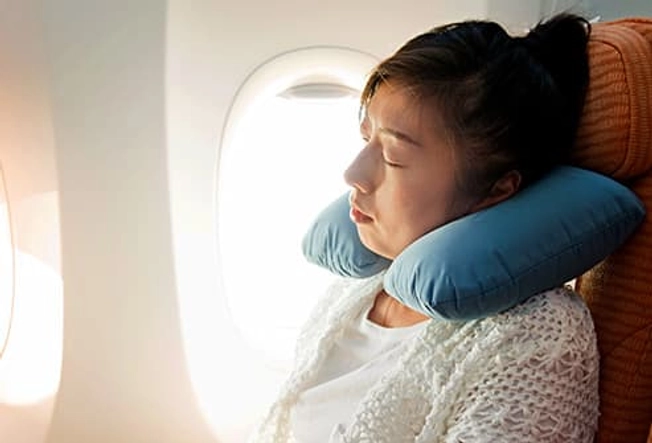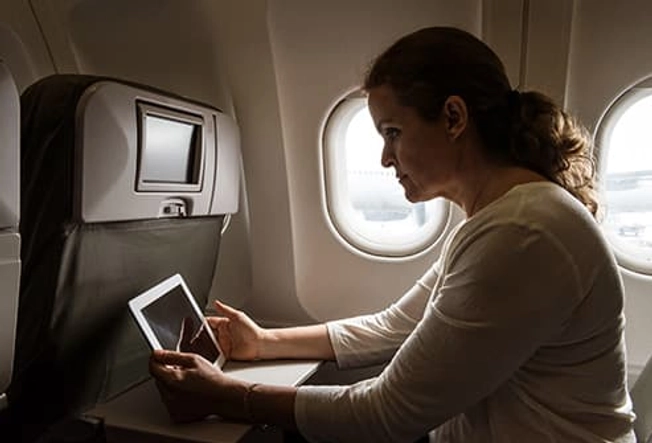Tips for Traveling When You Have Back Pain


Get Seat Smart
Book your flight as early as you can for the best seat choices. If you can afford it or have reward points, upgrading to business or first class may be worth the extra comfort. In coach, exit row seats have more legroom. But you need to be able to carry out emergency duties. Always aim for an aisle seat. You won’t have to climb over people, and it’s easier to stand and stretch or take a quick stroll.

Timing Is Everything
Avoid long lines at check-in and security, and travel during off-peak times. Midweek tends to be less busy. Check in online when you can. And get to the airport at least an extra hour earlier than recommended. On road trips, try to avoid rush hour and heavy holiday travel days so you don’t get stuck in traffic.

Clearing Airport Security
Call TSA Cares at 855-787-2227 to learn how to get through security more comfortably and easily. They can even assign a helper at the airport. If you want someone you know to go to your gate with you, ask your airline for a pass that allows the person through security without a ticket. A Transportation Security Administration notification card, which you can get online, or a doctor’s note about your condition can help things go more smoothly.

Sign Up for TSA Precheck
If you travel often, precheck can save you hassle and pain. You pay $85 for a five-year membership that fast-tracks you through airport security. You won’t have to take off your shoes, belt, or a light jacket. Even your liquids and laptop stay packed. You have to pass a background check and get fingerprinted. So it’s not something you can sign up for on the spot. And not all airports have it, so check the ones you fly out of.

Phone or Email Ahead
Airlines, hotels, and cruise ships want to please you. Contact them ahead of time and ask about elevator access, bellhops, accessible bathrooms, and more. Be specific about what you need and what might help. If you have the option, go for a hotel that has a heated pool, hot tub, or sauna to ease your pain after a long day.

Ask for a Wheelchair
Even if you don’t usually need one, consider it. Airports are filled with snaking lines and long walks, which can be a recipe for back pain. You can reserve one when you buy your ticket or just ask for one at the airport. Either way, give yourself extra time. It could take a while for the airline to line up a chair and someone to push it. The service is free, but the attendants appreciate tips.

Pack Light and Get Wheels
Bring only the things you really need and divide them into a few light bags instead of single heavy one. If you can’t stay light, you could ship your luggage ahead to your hotel or cruise ship. Nix the backpacks and duffel bags and go with rolling luggage. Ask for help every step of the way, from fetching you bag from the trunk to stowing it overhead.

Take Stretch Breaks
You might be tempted to power through a long trip. But you’ll probably regret it. If you’re on the road with someone else, take turns driving and pull over at rest stops for a quick stretch. On a plane, train, or bus, get up every 20-30 minutes and stand or stroll if you can. Let the driver or flight attendant know you’re dealing with pain and will need to stand up regularly. If you’re boxed in by meal carts, do stretches while seated.

Fly Direct or Lay Over?
It depends. Long flights can make pain worse, but they cut your travel time. Connecting flights might mean rushing through airports. But you get a chance to stretch and use more accessible bathrooms on the ground. Try to leave at least 90 minutes for your layover. Ask the airline about transportation to your next gate.

Pack a Comfort Kit
Don’t skimp on this one. Make sure you have plenty of heat wraps, cold packs, and soothing creams. A small pillow can go a long way, too. Shift it around -- behind your back, under your bum -- to change your body position. If you’re shorter, a foldable foot rest helps you keep good posture. A light blanket keeps you warm and can be rolled up for more support.

Medication Tips
Keep your meds in your carry-on so you always have access to them. Bring more than you think you’ll need since you never know when you might get stuck. If you usually get shots for pain, get them before you leave. Keep all drugs in their original containers to avoid problems at security or customs. If your meds need to go in the fridge, call your hotel ahead of time to make sure your room has one.

Do It All, Just Not in One Day
Even if you’re not a planner, try to map out your trip. If one day involves a lot of walking or other activities, balance it with something more restful the next day. Look into bus tours that allow you to hop on and off so you can take in more sights with less strain. And of course, wear comfy clothes and shoes. Slip-ons are ideal for airports.

Keep Stress in Check
Few things ramp up anxiety like unexpected problems away from home, which can make pain even worse. Plan ahead as much as possible to help put your mind at ease. Talk to your travel buddies and let them know you need to build rest breaks into your trip. If you can afford it, get a massage or spa treatment. Distract yourself from the pain with a book, video, or music. Tablets are lightweight and perfect for this.

Drink Water and Rest
It’s easy to get swept up in the adventure of travel, but don’t forget the basics. Stay hydrated to help manage your pain. Bring an empty water bottle through security and fill it on the other side. And don’t skip out on sleep. Your body needs time to recharge, so bring along whatever you need to ensure good shut-eye.

Talk to the Health Pros
Your doctor can give you travel advice specific to your condition, especially if you’re unsure about how certain activities will go for you. Others, like occupational therapists and driving rehab specialists, may offer great ideas, too. For example, rental car companies offer cars with things like swivel seats that can make them more user-friendly for you.

Tap Into the Web
Countries, states, and cities often have tons of information online about more accessible or comfortable travel options. San Diego, for instance, offers free beach wheelchairs and tips for taking in theater and getting your shopping done when you have a hard time getting around. There are lots of groups and even specialized travel agents who can connect you with the right resources to make your travel as pain-free as possible.